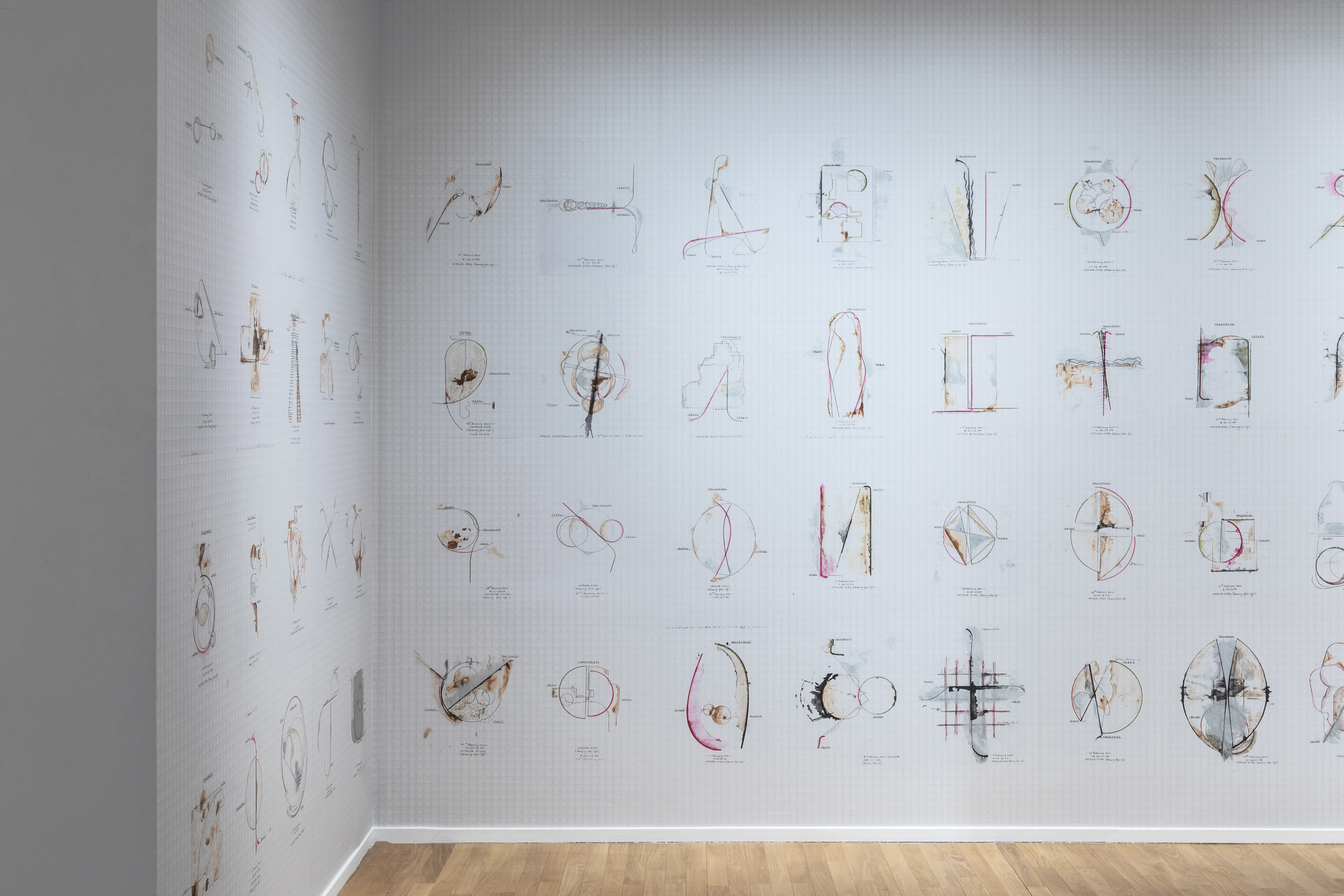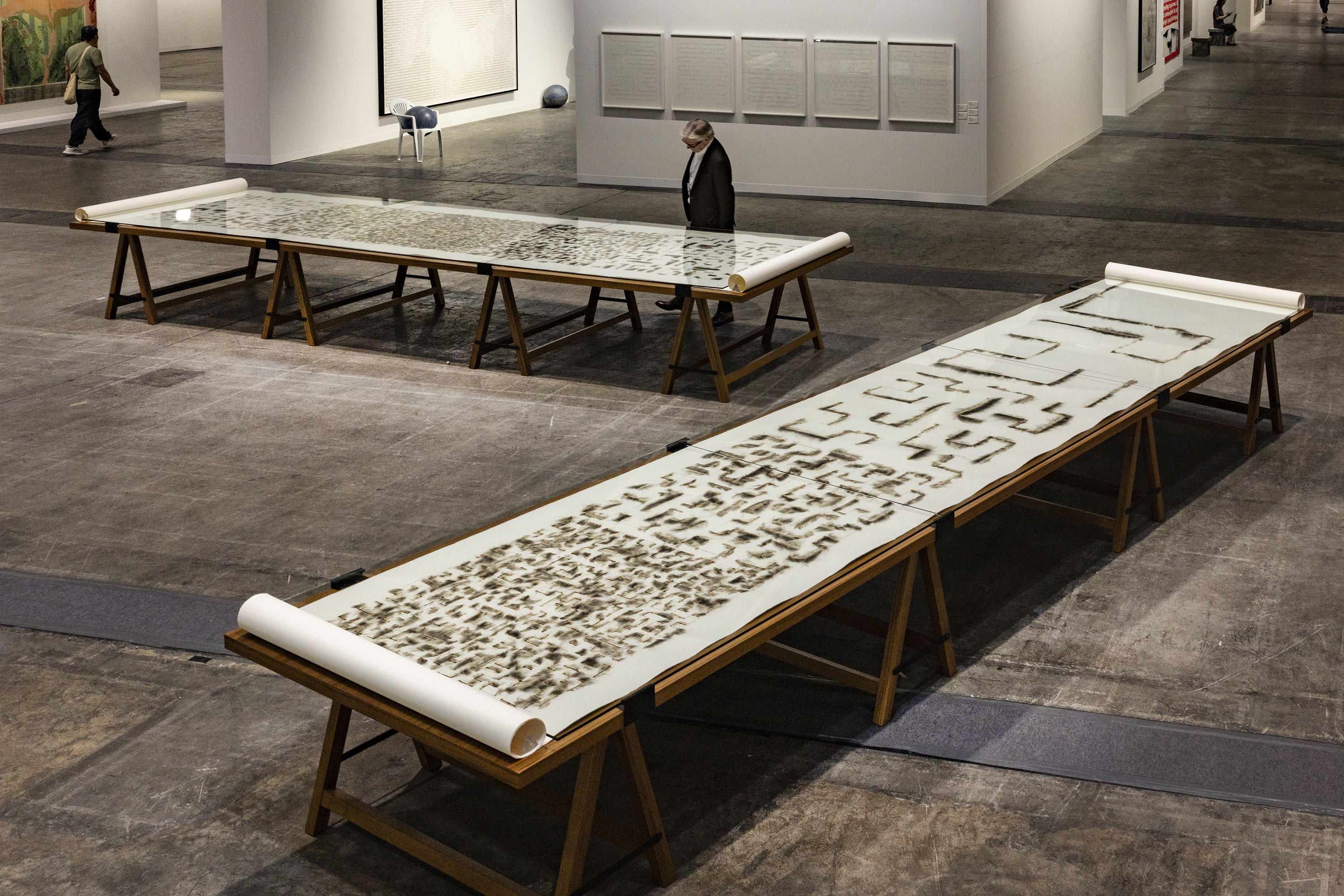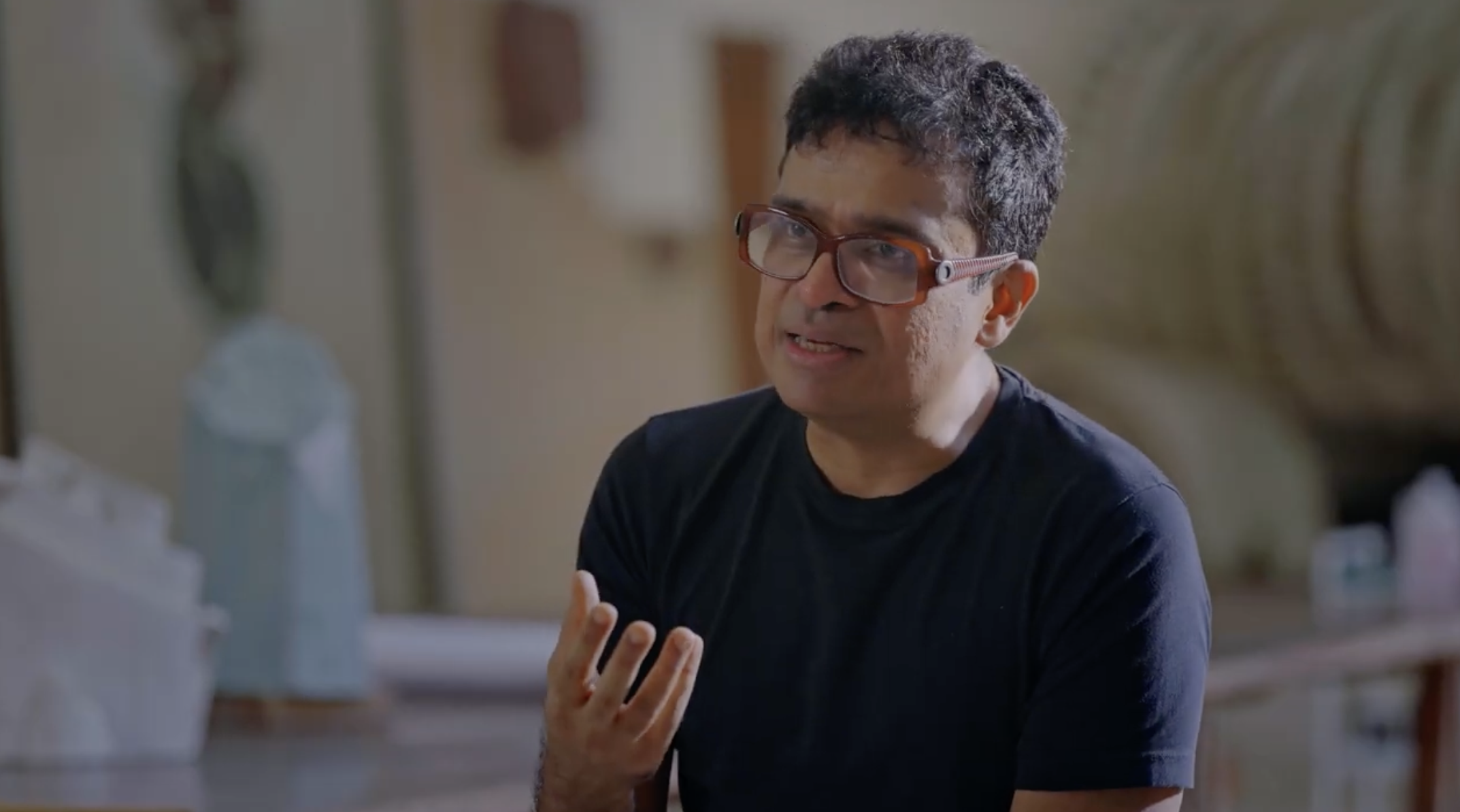
Wind Study: the infinite and the infinitesimal
Essay
Mathematician Maria Cumplido Cabello focuses on the mathematical concepts present in Jitish Kallat‘s drawings and installations, where natural elements, transience of time and human finiteness coexist with curves, fractals, and algorithms.
Wind Study: the infinite and the infinitesimal
By María Cumplido Cabello
The empty and the full. The distant and the near. The mundane and the mysterious. These dualities are constants in the work of Jitish Kallat. How can we find the immeasurable in small things and vice versa? How can the artist’s intentionality converse with the randomness of nature’s will? In the Wind Study series, the artist’s lines are set aflame and surrendered to the wind, an agent as natural as it is invisible, playing an active role in the creation of the work, giving rise to an interaction between the fundamental elements: fire and wind. Kallat’s drawings prompt us to reflect on chaos theory, on physical and mathematical systems that are significantly altered by minor variations, and which are extremely difficult to model. What atmospheric conditions kilometers away from Kallat’s studio in India produce the wind that will move the flames? The introduction of a natural and intangible element is already present in the artist’s earlier works, such as Rain Study, where raindrops fall from the clouds to form constellations within circles of black pigment.

This engagement with invisible forces in action ultimately leads to a mathematical dimension. Jitish Kallat relies on it to describe the phenomena of reality. The artist observes patterns, the repetition of numbers and forms and uses algorithms as a guide. In Circadian Study (contact tracing), the drawings arise from delineating the shadows of fallen tree stems in the artist’s studio and are strongly conditioned by time and geometry. The drawings mark the shifting positions of the sun and the earth relative to the stem and the paper. In Integer Study (drawing from life), Jitish Kallat is guided by three numbers representing humanity—those representing deaths, births, and the number of people on Earth—to create an almost primitive ritual, which allows him to capture a continuously varying condition in a series of daily drawings. Thus, the artist imposes on himself the need to collaborate with and derive from external conditions. Something similar happens in Wind Study, a body of drawings that began with intuitively drawn constellation of circles and lines in 2015, but Kallat soon finds an ideal mathematical template in the Hilbert Curve.
“The use of the Hilbert curve in Wind Study could be the ultimate abstraction of an idea that recurs in the work of Jitish Kallat: the repetition of patterns and cycles, both in history and nature.”
The Hilbert curve is a fractal, a geometric construction process that repeats infinitely at different scales. In a fractal, the same shape is endlessly repeated. In any drawing, if we zoom into the image, we will reach a colour, a pixel, and we will no longer know what image it composes. However, mathematics is not limited by physics; there is no minimum size particle. The drawing of a fractal can start at a planetary level, and one can zoom in indefinitely, reaching an infinitesimal scale, and continue to see the same drawing, for example, at an atomic level. The Hilbert curve provides the artist with a way to occupy space with a single line. The construction is as follows: it begins with a square from which one side has been erased (thus resulting in what we call a “U” shape). In the first iteration, the sides of the U are “folded inward” to create new small Us on each of the three sides. From then on, every time we see a U shape, with any orientation, we repeat this process, which continues infinitely. This curve also has the property (which not all fractals have) of being space-filling. This means that the curve can cover an entire space, or in other words, given any point within a defined space, there is an iteration of the curve that passes through it. Thus, given a space as large as desired, one can use this process to cover it as densely as desired, always preserving the structure of the unitary curve and always using a single line bent as many times as desired.

Rain study (the hour of the day of the month of the season) IV
The use of the Hilbert curve in Wind Study could be the ultimate abstraction of an idea that recurs in the work of Jitish Kallat: the repetition of patterns and cycles, both in history and nature. We see it in his works dealing with historical archival texts or playing with the idea of the repetition of complete lunar cycles. From a historical perspective, the Hilbert curve is a construction that could already be considered classic—it emerged at the end of the 19th century as an alternative proposal to the Peano curve for filling spaces, but transcends the limits of that simple mathematical question to be used today, for example, in computer science for image manipulation. Jitish Kallat takes it a step further, to the philosophical domain. In a world that is increasingly fleeting and rapid, the adaptability of the Hilbert curve to maintain its integrity at any scale provides an interesting counterbalance. The artist explores this over progressively larger spaces applying more and more iterations, even occupying a surface of several meters. He suggests that, in theory, the Hilbert curve could be used to circle the Earth, its infinite character allowing it to occupy any point on our planet. The theme of the planetary is a recurrent reference in Kallat’s practice as discussed earlier: his large paintings that the form of cartographic projections, the Integer Study portfolio becomes a ledger of humanity, or in Circadian Studies, the works result from Earth’s rotation. Along with the restrictions imposed by nature, the purity of the abstract in mathematics allows us to imagine space with fewer limits.
“Wind Studies may be an attempt to grasp the improbable outcomes of the complex chaotic systems we inhabit, by systematically recording their randomness in the hope that one can find meaning in them in the future.”
In Wind Study, the concept of infinity is recurrent. In several of Kallat’s previous works, one can see galaxies in fruit skins (his photoworks titled Sightings, 2015- ongoing) and moons in rotis (Epilogue, 2011) merging the macro and the micro. With the Hilbert curve, the use of fractals allows us to ponder the idea that the infinite can be found in a small space in a much more geometric and abstract way. The use of wind interaction also adds a random component that has to do with infinity and its close relationship with zero. In Wind Study, what is the probability that nature would form exactly that drawing? It is the same as that of the raindrops in Rain Study drawing exactly that starry sky. To calculate a basic probability, one divides the number of events by the number of possible outcomes. However, the number of possible outcomes, when an ever-shifting wind converses with fire over the Hilbert curve, is immense, and the variables to be considered are so numerous that we could consider them infinite from a practical point of view. The probability of something specific happening among an infinity of possibilities is simply null. That is why it is said that a finite number over an infinite number is zero. Indeed, by being unable to control all the variables of our existence, every moment we lived had a zero probability of occurring, yet they have occurred. This may be why Jitish Kallat’s drawings always record the moment and place in which they were made. To appreciate that they are unique because they depend not only on a person’s intention but on the randomness of life because in any other place and at any other time, they would have been different. Wind Studies may be an attempt to grasp the improbable outcomes of the complex chaotic systems we inhabit, by systematically recording their randomness in the hope that one can find meaning in them in the future.
—
Header: Wind Study ( Hilbert Curve) 3, 2022. Burnt adhesive, watercolor pencil and graphite on paper, 141 x 584 cm – 55 1/2 x 230in. (Detail)
2nd image: Integer Study (drawing from life), 2022. Wallpaper installation, Variable dimensions.
Last image: Exhibition view, Encounters by Art Basel, Hong Kong, 2024
María Cumplido Cabello holds a doctorate in mathematics from the University of Rennes 1 (France) and the University of Seville (Spain). She worked at the University of Burgundy (France), Heriot-Watt University (Scotland), the Complutense University of Madrid and the University of Seville.
Her work focuses on pure mathematics and the search for interactions between algebra and geometry. María Cumplido Cabello was awarded the Vicent Caselles 2020 prize and second prize for the best STEM thesis at the University of Rennes.
She is also a member of the Royal Spanish Academy of Mathematics (RSME), the European Women in Mathematics (EWM) and the Association of Women Researchers and Technologists (AMIT).

Born in 1974 in Mumbai, Jitish Kallat is one of the most promising artists of his generation. Jitish Kallat’s work, imbued with autobiographical, political and artistic references, forms a narrative of the cycle of life in a rapidly changing India. Weaving together strands of sociology, biology and archaeology, the artist takes an ironic and poetic look at the altered relationship between nature and culture.

